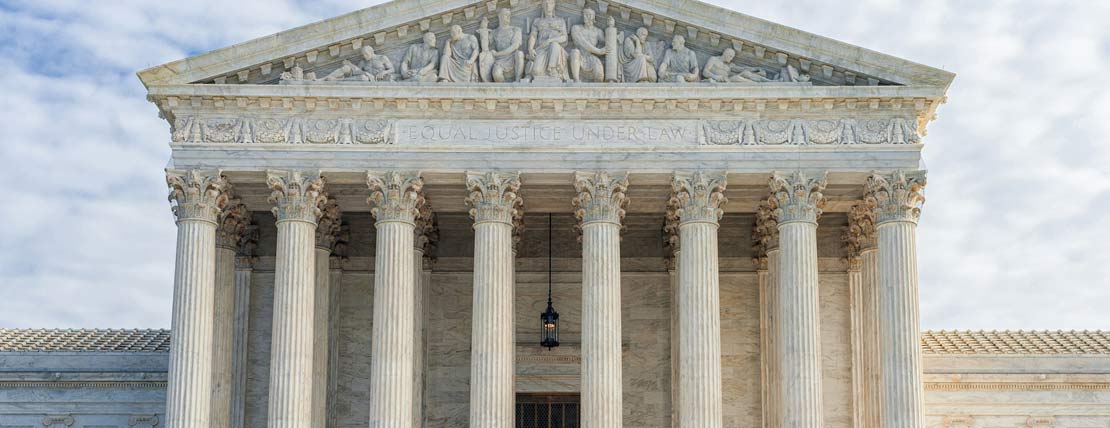For WorldatWork Members
- Engage Community, peer engagement and connection platform
For Everyone
- 2 Lawsuits (and 1 Lawsuit Threat) Target Trump’s Early Moves, Workspan Daily article
- Late-Night NLRB Shakeup Signals More Employer-Friendly Shift, Workspan Daily article
- Trump Firings Alter EEOC; Federal Workers Get Notice of Buyout Plan, Workspan Daily article
The Trump administration on Wednesday, Feb. 12, formally notified the Congressional Judiciary Committee that it will ask the Supreme Court to void a 1935 ruling that protects appointed workers in independent agencies from at-will firing.
The letter by Sarah Harris, President Donald Trump’s acting solicitor general, stated that tenure protections for members of certain government agencies — for instance, the National Labor Relations Board (NLRB), Equal Employment Opportunity Commission (EEOC), Federal Trade Commission (FTC), Consumer Product Safety Commission (CPSC), Federal Elections Commission (FEC) and Federal Reserve — are unconstitutional.
This situation is important to total rewards professionals because several of the government agencies in question enforce laws that protect American workers and those workers’ wages and benefits. The NLRB enforces the National Labor Relations Act, conducts elections to determine union representation and investigates allegations of unfair labor practices (e.g., wages, pay rates, working hours, work conditions). The EEOC enforces federal laws that prohibit employment discrimination in numerous areas (e.g., hiring, firing, promotions, harassment, training, wages, benefits).
The Harris letter occurred after former NLRB board member Gwynne Wilcox filed a lawsuit on Feb. 5 against the President, claiming her Jan. 27 firing from her position was illegal. Wilcox, whose board term was to run through August 2028, is one of nearly 300 leaders and workers who have been fired, reassigned or told they will be laid off by the Trump administration from government agency positions that are supposed to be protected from at-will firing by the executive branch. (Toward the EEOC, Trump fired former chair Charlotte Burrows, whose five-year commission term was to expire on July 1, 2028, and former vice chair Jocelyn Samuels, who was confirmed to serve until July 1, 2026.)
The 1935 Case, and the New Administration’s Issue with It
Under the 1935 Supreme Court decision in Humphrey’s Executor v. United States, it is currently illegal to fire workers from independent government agencies without cause. (In addition, the National Labor Relations Act states NLRB members can only be removed for “neglect of duty or malfeasance in office, but for no other cause.”) While some legal and political experts say the Humphrey’s Executor ruling gets in the way of executive power, others say it prohibits the President from imposing political retribution on workers.
“The Department of Justice has determined that certain for-cause removal provisions that apply to members of multi-member regulatory commissions are unconstitutional,” Harris wrote in her letter to Sen. Dick Durbin (D-Illinois), the ranking member on the Congressional Judiciary Committee. “The department intends to urge the Supreme Court to overrule the decision, which prevents the President from adequately supervising principal officers in the executive branch who execute the laws on the President’s behalf.”
House Democrats Seek to Reinstate Wilcox
Also on Feb. 12, three Democratic members of the U.S. House of Representatives — Bobby Scott (Virginia), Jamie Raskin (Maryland) and Gerald Connolly (Virginia) — sent a letter to the President, asking him to reconsider his termination of Wilcox.
“This firing not only violates the law but also undermines and weakens our democracy, represents an intrusion into Congress’ Article I constitutional legislative authority, and puts workers in America at risk,” the letter stated. “The NLRB enforces the law to ensure workers are protected from intimidation and unfair firings and other barriers to their right to organize a union. By firing one of the board members, the NLRB lacks the quorum necessary to continue its functions — thus grinding the agency to a halt. ... We strongly urge you to reverse this unlawful firing and comply with your obligations to the American people under the Constitution and the law passed by Congress.”
What Happens Next?
It is unlikely that Trump recants his firing of Wilcox. Therefore, it is anticipated that the status of the Humphrey’s Executor precedent will hinge on the outcome of the Wilcox v. Trump case, which would end up in front of the Supreme Court following appeals. If the Supreme Court rules in favor of the President, it is a near-guarantee that the justices will overturn the 1935 ruling.
Conservative justices Clarence Thomas and Neil Gorsuch have previously said they want to repeal this law. In a 2020 ruling over removing the independence of the Consumer Financial Protection Bureau (CFPB), Thomas (with concurrence from Gorsuch) opined: “The decision in Humphrey’s Executor poses a direct threat to our constitutional structure and, as a result, the liberty of the American people. The Court concludes that it is not strictly necessary for us to overrule that decision. … But with today’s decision, the Court has repudiated almost every aspect of Humphrey’s Executor. In a future case, I would repudiate what is left of this erroneous precedent.”
Additionally, legal experts say justices John Roberts, Samuel Alito and Brett Kavanaugh support the “unitary executive” theory as applied to Presidential actions. This theory is rooted in the belief that the President has sole authority over the executive branch.
Editor’s Note: Additional Content
For more information and resources related to this article, see the pages below, which offer quick access to all WorldatWork content on these topics:







